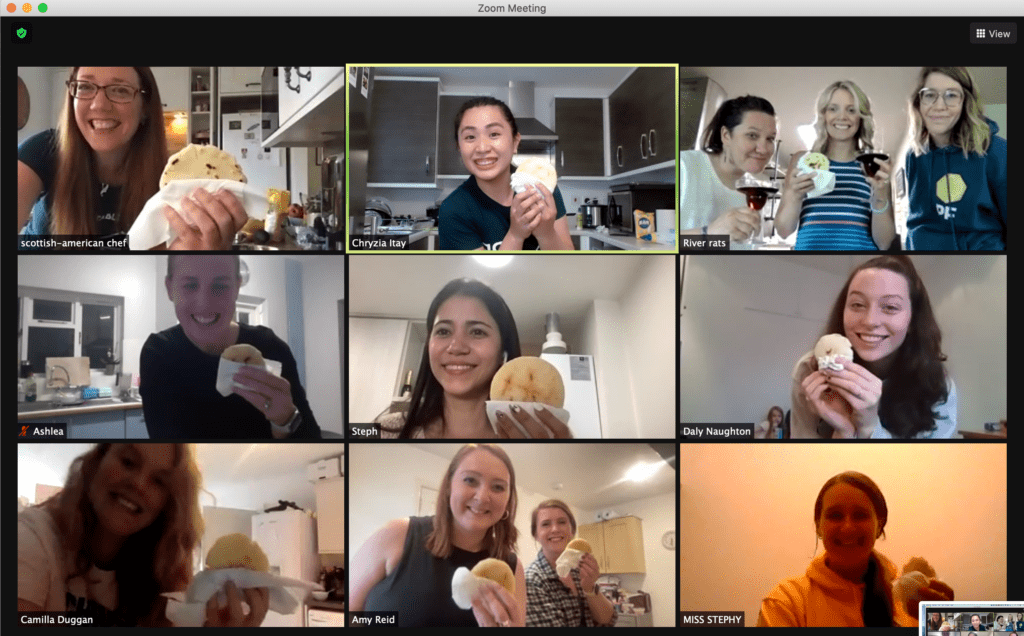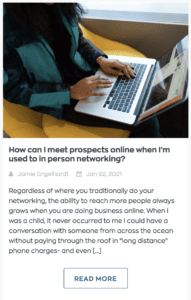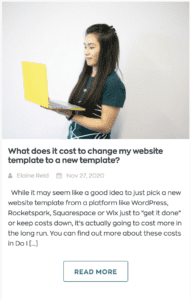Multiculturalism can help you find a balance during volatile, uncertain, complex and ambiguous (VUCA) times that require your accounting firm to be adaptable. You can adapt to this fast environment by looking at the team around you and taking advantage of our connected world. VUCA times can be overwhelming and stressful when it comes to hiring or gaining trust with a potential client that is having a higher stress level.
A multicultural team involves diversity of perspectives, backgrounds, skills, ideas, cultures and conceptions. It is not merely a matter of race, gender or religion, though those are important.
Diversity opens up opportunities to be more innovative and creative with your clients, have in mind that positive differences allow you to have more resources to present better solutions. Learning from the different cultural experiences and situations your team has lived can help you understand a diverse world of clients and improve your business’ results by enabling you to reach a bigger, more inclusive audience.
Growing a multicultural team can feel new and sound complicated, and it will be difficult; but if it’s “must have” for a firm wanting to be more competitive, then it’s worth the effort.
Diversity makes your accounting firm strong by:
- Driving innovation and creativity: The brainstorm process is more effective when a range of perspectives are contributing. Creativity and innovation come from ideas and what strengthens those ideas is when they are supported by experiences. When combining those of different people, the result will be more solid and powerful because it is in diversity where you will find better solutions.
- Improving your understanding of the market: Within a diverse workforce you can find many backgrounds, cultures, experiences, stories that can improve how you understand the market and its behavior and this is important when it comes to adapting to new situations. Your firm will be able to offer a broader range of services. And, more than that, your clients will feel heard because it is not just a matter of selling, it is getting to those deep things they are struggling with and building a path to a solution.
- Providing new market opportunities: Multiculturalism comes with different language skills and regional expertise, which can open up the possibility of reaching business owners in new markets. For example: if you would like to expand to a different country and target a specific niche, having someone in your team from that location, with the knowledge about how the market behaves, sharing cultural similarities and previous experience in accounting, can help you accomplish your expansion goals to other markets.
- Increasing your productivity: Diverse teams who work in constant communication can be more productive and efficient based on how they adapt to manage different situations.
When you have a team thinking differently, their motivation to contribute will be welcomed because they feel in a physiologically safe environment where they are encouraged to share their thoughts. For example: I started to work with clients that are from different cultures and that similarity of sharing a different culture is becoming something positive to generate better relationships and deliver a better client service.
The biggest challenge is to create a safe multicultural environment
To develop a more multicultural team, create an environment where diversity can thrive. A safe space where everyone can speak their minds, where all opinions and ideas are valued.
This is often called a “place of psychological safety”: and it’s a rare thing to be found in many companies. It means the culture is one where the team members feel comfortable and confident that they won’t be embarrassed, shamed, or punished for speaking out, making a mistake, failing, asking questions, or sharing ideas.
You can WANT your firm to be a place of psychological safety: but only your team (and your clients) are the ones who experience it as one. There are some things you can begin building so you have a more inclusive environment, including:
- Modelling your values: Having “company values” doesn’t mean picking some nice sounding words and putting them on your office walls, or designing a manifesto. It means identifying values that can be lived out, and then literally living them out yourself as an example to the team. If one of your values is “positivity”, how are you choosing to see the good and encouraging others every day? If a value is “ambition”, are you asking your team members what their ambitions are, and looking for small practical ways to help them achieve those? Living out values doesn’t mean big drastic statements or decisions: it means small steps, day after day. Little messages, little comments, a quick check in, an encouraging word, a reminder, a practical support, a gift… these matter, because they gather over time and show a pattern of the values you say you live up to.
- Being clear about processes: Think about how your processes are built and how your team members must follow them. Be clear and concise about them. Have those processes documented in a handbook (or Gsheet, or project management software) so the whole team is able to access them, check in on them, and follow them consistently.. You’ll also want to create “spot checks” to confirm everyone is actually following those processes. A subtle culture shift happens when you have processes you say everyone follows, but there are no repercussions for those doing it their own way.
- Clear job descriptions: Make sure the role expectations have been clearly set not only with the role descriptions, but the milestones, journey, and path each team member will follow. Identify the skills and experience required, as well as the ways the team member will be reviewed. At PF, our regular team “check ins” include a document the team member completes beforehand, identifying where and how they have specifically lived up to the PF values and pillars, with examples. This is another way to apply values to your business – not just list them out on a website page.
- Actively work to consider the stereotypes you have: This is extremely difficult. Many of the stereotypes and presumptions we have are built in so deeply we don’t even know they are there. First, presume you have them. Don’t do your team the disservice of thinking you are so understanding of things and people and cultures you don’t know yet. Get to know your team better in small, practical ways. Ask about their culture, language, religion, interests and those things that make them so important to the team: always with the goal of your firm being a place of psychological safety, so making sure it’s okay if they aren’t ready to talk about those things yet. Take special care about how you communicate and don’t make assumptions about behaviours. When you do catch yourself presuming something and finding out later it’s different than you expected, own up to it. Model those good values of integrity, transparency, and communication. Be open to that incredible diversity, there is a ton of richness in it.
- Invite team members to share their culture with the rest of the team: A safe workspace is one where you feel comfortable being yourself. Being able to share your culture openly is a sign that you’re in a safe zone. An example of how you can integrate your team is creating space and time for individuals to share their culture.
In our recent team retreat we had a cooking night and I had the honor and privilege to guide this fun and exciting session by sharing one of my favorite recipes from my home country, Venezuela, the famous “Arepa Reina Pepiada” (Here is a recipe for you to prepare them). I felt valued and part of a great team just by having the opportunity to share a (delicious) piece of my culture with them.
- Language barriers: Having someone who speaks more than one language has several advantages: and you still want them to manage themselves in the primary language that you implement in your company. Even if they have advanced language skills, getting to know accounting technical language or the way you communicate informally can take them time and practice. Be patient. Be gracious. Ask questions. Check in to see how people who speak multiple languages are feeling, and dealing with this in their daily work. Really listen to the answers.
I am a second language English speaker, my native tongue is Spanish, and what I have found really helpful from my PF teammates is their understanding of how the language can work for me and also giving space to slow down in my mind to find the right words. They have reminded me my pausing to think is also my superpower: it helps me to put the right words in my head before speaking, to share carefully what I want to say, rather than rushing to quick answers without thought.
All the challenges from having a multicultural team are possible to overcome, and the advantages and benefits are always more, and will make your firm stronger.
Something I consider really important, to overcome any barrier, is empathy. Putting us in others’ shoes can help us make our diversity a strength. I have found that having the feeling others care about who you are as a human being, regardless of where you come from, what you do or how you look, is encouraging and can empower you to give more than you thought you could give. And this leads you to think about how your brand needs to be more inclusive and show empathy throughout it, too.
Your brand must be working together with your diversity
Making multiculturalism part of your company’s culture and values must be communicated through your brand. Create a healthy diverse environment for your workforce, and show you are a safe place for those ideal clients who share your values from a new perspective.
To attract the right candidates for a specific role, or ideal clients you love to work with, you must show that, no matter the culture, gender, race, religion, where they come from, your company sees the value in new perspectives and challenges.
How can you incorporate diversity and inclusiveness within your brand?
- Review (and potentially revise) your values: Check to make sure multiculturalism is an integral part of your company’s values. Acceptance, tolerance, inclusiveness, and open mindedness are part of multicultural environments. We at PF have four core values and I would say multiculturalism is implicit in all of them:
- Generosity: Part of our mindset is being open to help, no matter where that help goes. We care about how we help, without restrictions on who we help.
- Integrity: A really important part of this value is respect. A diverse environment where you can have teammates and clients from different cultures must be full of respect for others, and we know that no matter your culture, you have a positive value to add.
- Creativity: We love different perspectives and ideas, we consider this a powerful thing because, if someone has something to add or say and another person has a different perspective about it, the mix between both ideas can become MAGIC.
- Rest: We can have different perspectives about rest within PF. For some of us, doing some creative work, reading a book, playing with our dogs, properly taking a nap, going for a walk or practicing sports are part of rest. What matters is to have that space to do that thing that makes you feel calm and happy.
- Build inclusive tone of voice: The way you speak or write can represent a massive difference between being open to be considered a safe diverse environment and not. Use gender-neutral terms, consider your expressions based on the cultures you want to attract and consider those words that don’t mean the same in different places. Find a balance, but don’t lose your uniqueness in the process.
Your tone of voice must be present in all your written communications, but also when you personally speak with candidates for a role, prospects or your own company team.
Here are seven easy steps for building your tone of voice.
A very tiny action you can take to help support a varied team is to change your company’s Zoom settings so the option to add pronouns is provided. It’s a small thing, but may be appreciated in ways you don’t see now.
- Imagery selection: Images can communicate even more than words. Be careful when you select them. Include diversity of cultures, races and genders in your photos. Make this as part of your brand. Be consistent throughout all your communication channels (socials, emails, videos, tutorials, etc.). Intentionally show how you are open to embrace diversity.
Here are a few examples from our blogs images:
Being inclusive is something you need to show throughout your entire communication strategy, but also in the way you interact with clients and team members. You need to make a statement.
Diversity will drive your business to a whole new level
Embracing differences is a great way to make your accounting firm strong and powerful. You have access to a greater pool of talent, a greater mix of world perspectives and a greater understanding of potential clients’ diverse needs and desires. This means the clients who come to you can feel comfortable, reassured, and safe. As accountants, you have deep discussions about things which really matter to your clients: their finances, their family, their fears, their dreams. Sometimes these can be hard for them to share, and the more open you are (and the more diverse your team), the more open your clients can be – which allows you to help them more. After all, their personal life is integrally connected with their business life. If one is suffering, the other suffers. If one is strong and supported and encouraged, the other benefits.
It is important you consider how to implement multiculturalism without feeling overwhelmed. Always remember you can start small and safe by looking for tiny actions which show you intend to be genuine, open minded and empathetic about different perspectives, cultures and ideas. And if you try something and it’s not received as supportive, ask questions and be curious. Don’t run away from it: talk more about what you could do next time. A little openness leads to a little more openness, and it takes time.
A multicultural team helps your marketing be seen as more human
The main goal behind multiculturalism is to be stronger and show the power behind being inclusive and have in mind that, no matter the culture or background, being a human being is more important than any role or title someone can have. After all, marketing has the greatest impact when you share your humanity, and they share theirs in return. It’s a relationship you are building: and those involve trust.
Implementing these things in the smallest ways possible may not feel like a big deal: but you’ll slowly begin to discover how much people notice these changes. They’ll see the images you choose, the words you say, the way you listen, the questions you ask, the people you hire. They’ll open up in return. Even if you have an exclusive niche, or a very specific group of people you serve at your firm, they’re still humans. And every human has their own feelings, background, language, attitudes, history, concerns, fears, motivations, and joy. Show them you are not “looking for clients”, “just trying to sell” or “building your firm”: you are connecting with human people who own businesses, and helping them do that well. That is beautiful marketing, because it reflects beautiful humanity.
If you would like to connect with a diverse group of accountants from all over the world, who are learning marketing together, you can join the PF Lab.
And here is StephieG’s video in her native Spanish!:









